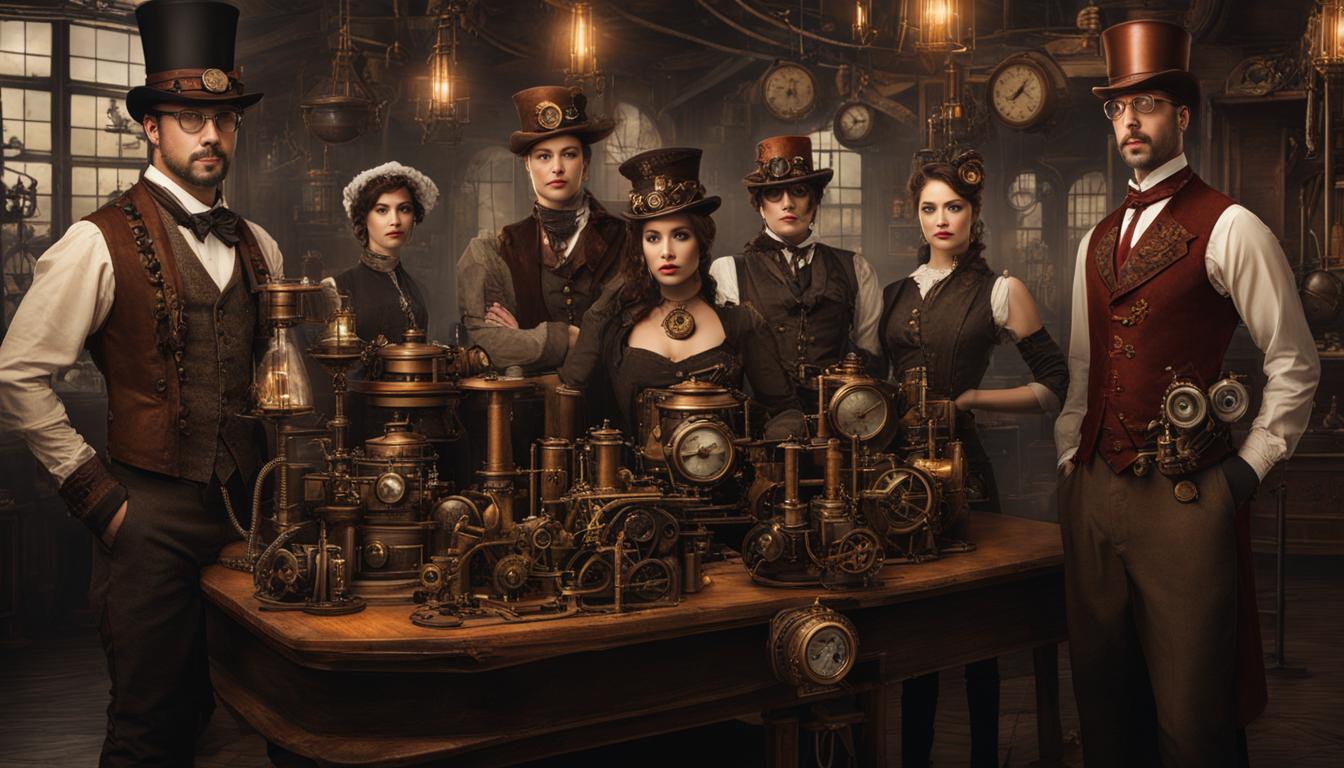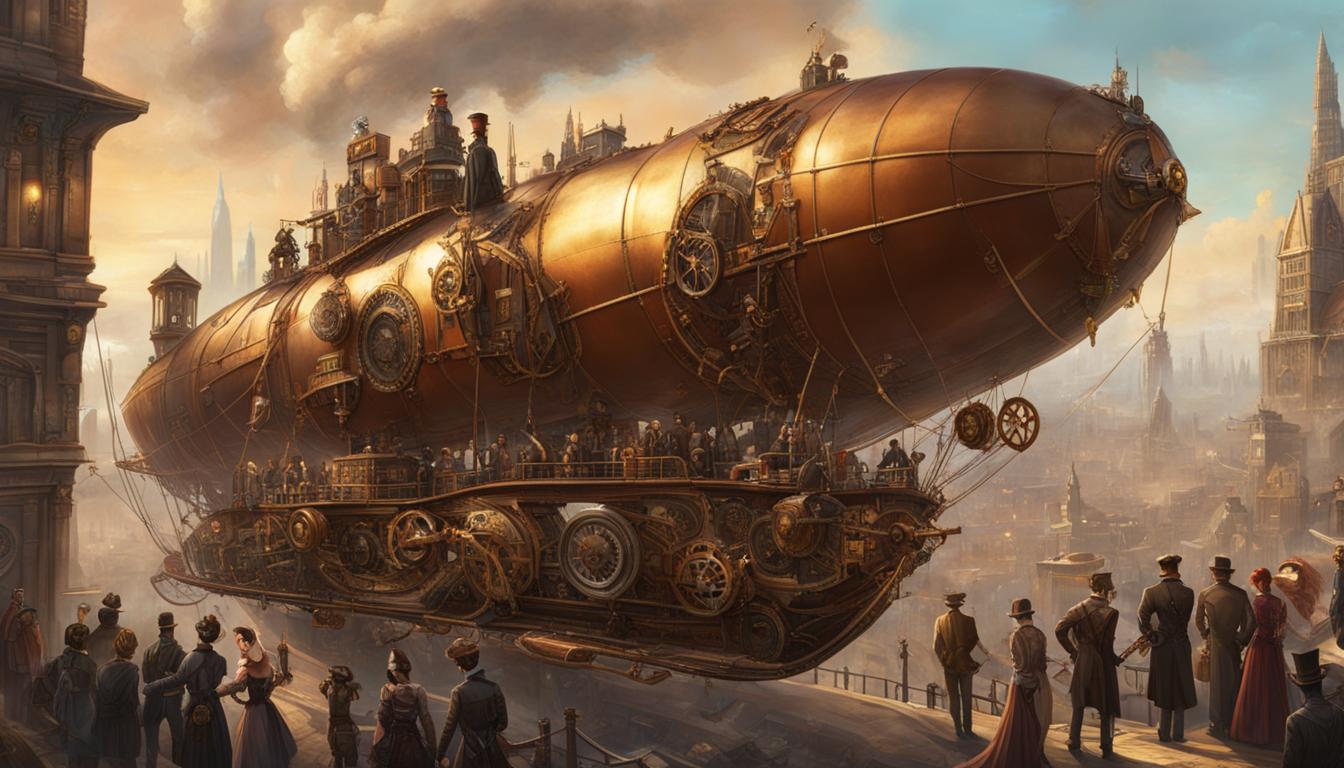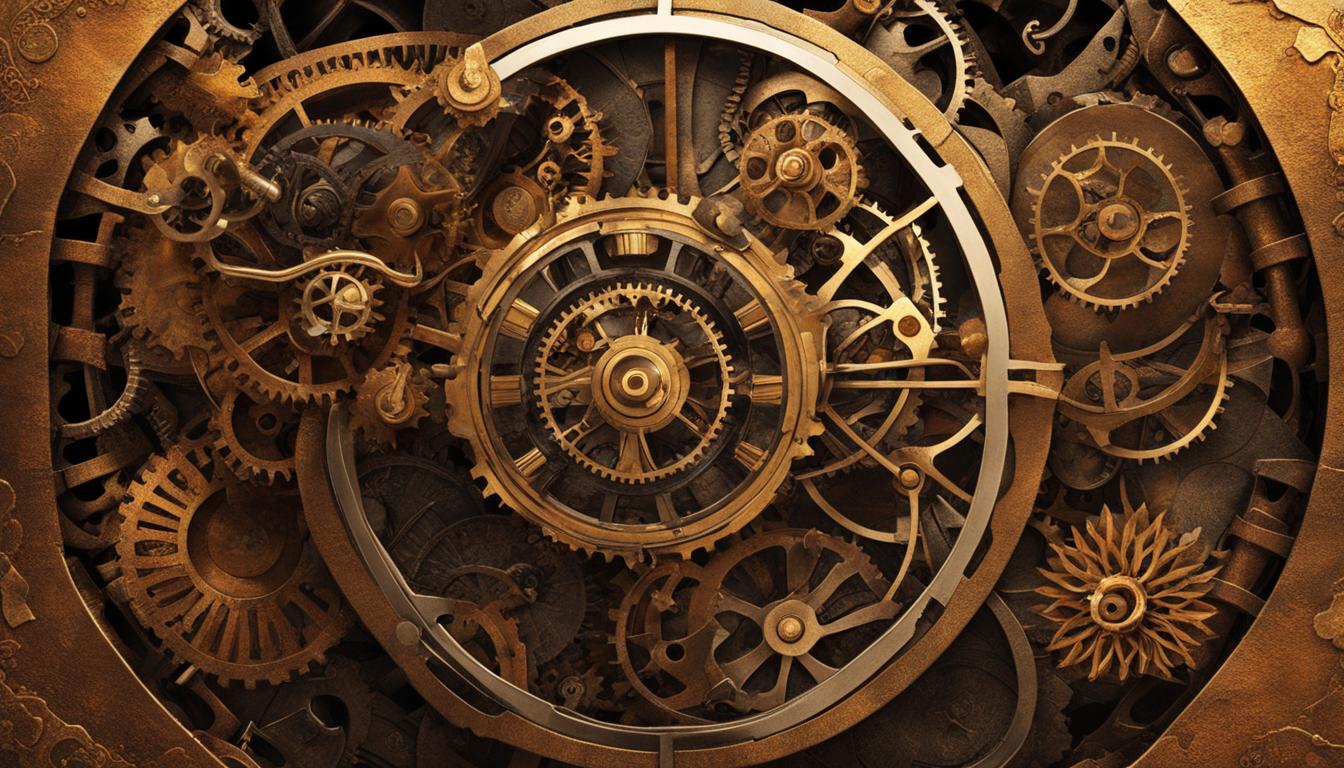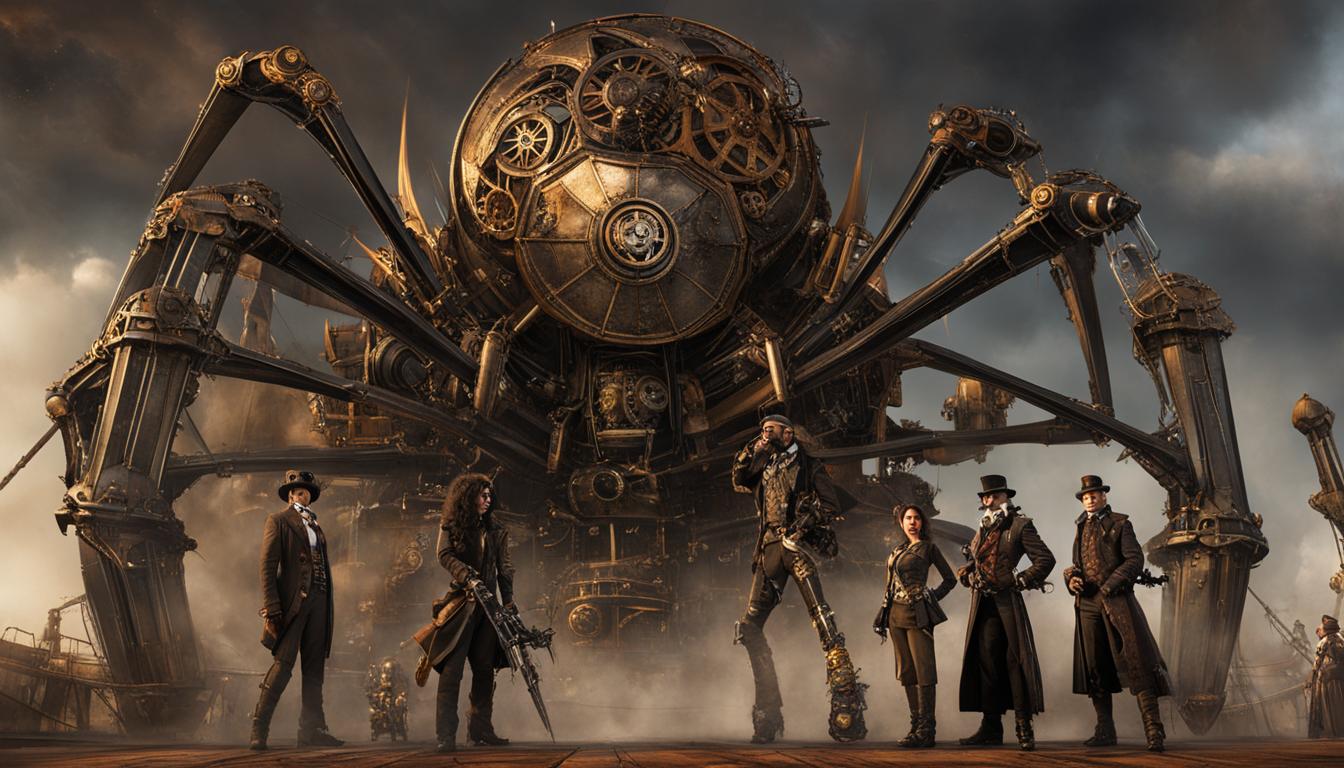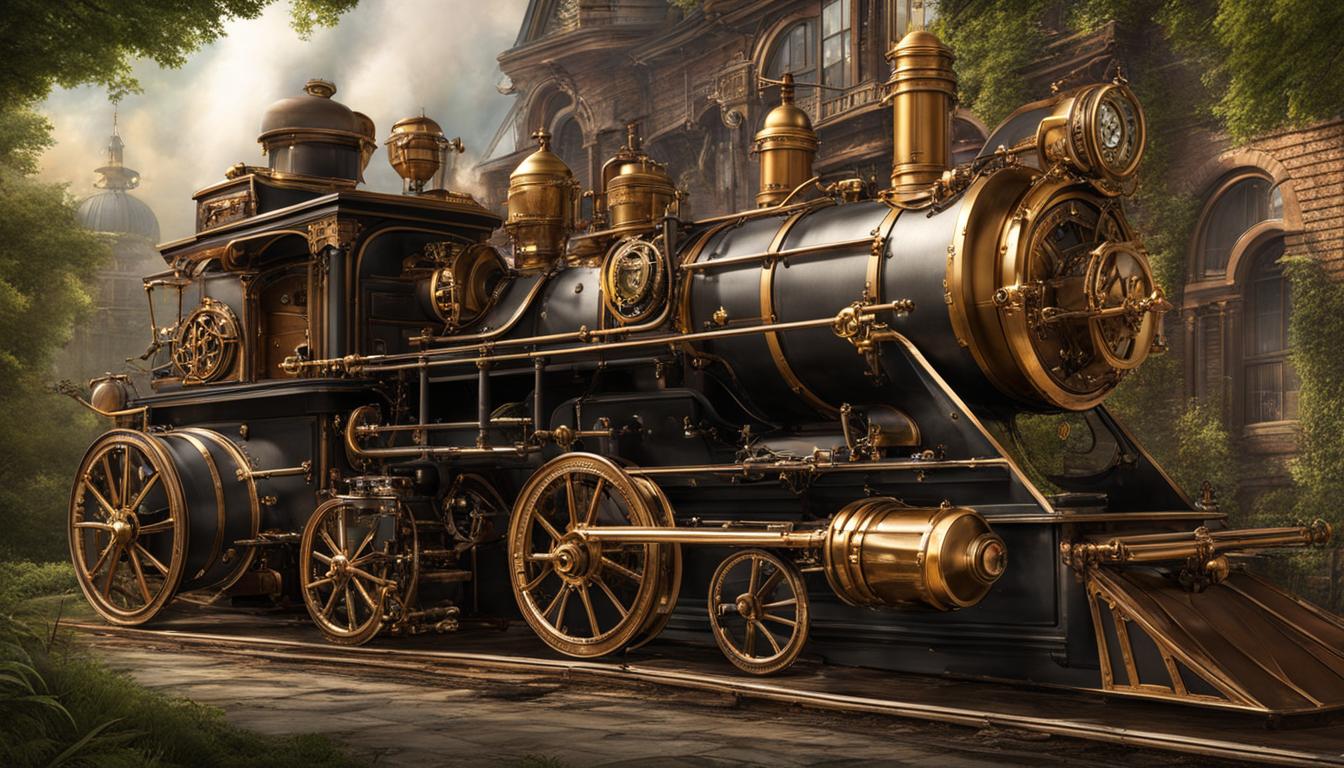The combination of Victorian English curiosity, the Industrial Revolution, and emergent sciences revolutionized the world in a cornucopia of ways, but it also shaped a genre of science fiction that has captured the imagination of readers for years – steampunk. Steampunk literature and art pair futuristic technologies with a Victorian aesthetic, reimagining Victorian society with steampunk twists. The genre explores the scientific possibilities of technology, social classes, and gender roles in steampunk settings. It presents a retrofuturistic vision of urban and rural life with a blend of Victorian norms and values and modern interpretations.
Key Takeaways:
- Steampunk combines futuristic technology with a Victorian aesthetic.
- It reimagines Victorian society with steampunk twists.
- Steampunk explores social classes, gender roles, and family dynamics in its portrayal of urban and rural life.
- The genre challenges traditional Victorian norms and values.
- It creatively reinterprets Victorian professions through a retrofuturistic lens.
Steampunk Societal Hierarchies: A Twist on Victorian Classes
Steampunk takes the traditional societal hierarchies of the Victorian era and adds a unique twist, creating a fascinating reimagination of social classes in steampunk settings. In these alternative worlds, steampunk explores the lives and struggles of individuals from different social positions, highlighting the social expectations and rebellions that exist within these stories.
One of the key elements of steampunk is its ability to challenge and subvert the established norms and values of Victorian society. It presents a fresh perspective on social hierarchies, allowing us to question the rigid structures of the past and imagine alternative possibilities. Steampunk settings often feature a diverse range of characters, each with their own motivations and aspirations, who navigate the complexities of class dynamics.
Whether it’s the ingenious inventor from the lower class who defies expectations and rises to prominence, or the aristocratic rebel who rejects their privileged status, steampunk offers a rich exploration of social classes and their impact on individuals. These tales of social mobility and resistance provide a thought-provoking commentary on the power dynamics that shape societies, both real and imaginary.
Steampunk Societal Hierarchies: A Twist on Victorian Classes
| Class | Description |
|---|---|
| Upper Class | The elite of steampunk societies, typically aristocrats and industrial magnates who hold significant wealth and influence. |
| Working Class | Comprising the laborers, factory workers, and skilled artisans who power the steampunk world with their hard work and ingenuity. |
| Underclass | The marginalized and disenfranchised members of society, often struggling to survive in the shadows of the steampunk metropolis. |
| Rebels and Outcasts | A motley crew of individuals who reject the established order, banding together to fight against injustice and inequality. |
Through its exploration of social classes, steampunk invites us to reflect on the broader themes of social inequality and the potential for change. It challenges us to question our own assumptions about class systems and consider alternative ways of organizing society.
“Steampunk societal hierarchies provide a canvas for examining power dynamics and social mobility in a way that is both entertaining and thought-provoking.” – Steampunk enthusiast
Gender Roles in Steampunk Societies: Breaking Victorian Norms
Steampunk literature and art not only reimagines Victorian society with its retrofuturistic twists but also challenges the traditional gender roles that were prevalent during that era. In steampunk societies, the portrayal of gender dynamics takes on a whole new dimension, with female characters often breaking free from the constraints of Victorian society and showcasing strength and independence. This paradigm shift allows for a refreshing exploration of gender norms and the blurring of lines between masculinity and femininity.
Unlike the rigid expectations placed on women in the Victorian era, steampunk presents female characters as pioneers, adventurers, and inventors. They are no longer confined to traditional domestic roles but instead actively engage in pursuits traditionally reserved for men. This rebellion against societal norms adds depth and complexity to steampunk narratives, allowing readers to immerse themselves in a world where gender is not a limitation but a catalyst for innovation and empowerment.
“Steampunk offers a thrilling escape from the confines of reality, allowing us to question and challenge the gender roles that shaped Victorian society. It presents a vision of strength, resilience, and diversity, where individuals can break free from the chains of tradition and forge their own path.” – Author Unknown
Furthermore, steampunk also provides a platform for exploring alternative family dynamics within a Victorian context. The traditional nuclear family structure is often reimagined, allowing for non-traditional relationships and unconventional family units. In this steampunk vision of Victorian family dynamics, the focus shifts from strict gender roles to the bonds of companionship, shared aspirations, and chosen family.
| Victorian Family | Steampunk Family |
|---|---|
| Father as the breadwinner | Co-parenting and shared responsibilities |
| Mother as the caregiver | Female characters exploring their own pursuits |
| Traditional nuclear family | Chosen family and diverse family structures |
The steampunk genre offers an intriguing departure from the Victorian era’s rigid gender expectations, providing a refreshing and forward-thinking perspective on gender roles and family dynamics. By breaking free from the constraints of historical norms, steampunk allows readers to explore a world where gender is redefined and possibilities are endless.
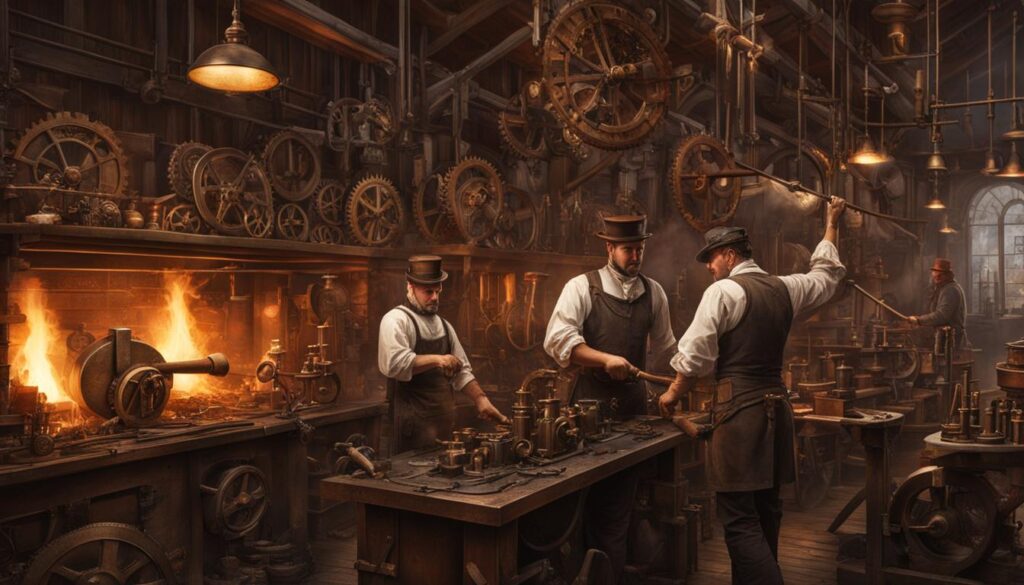
The realm of invention, too, undergoes a metamorphosis in the steampunk genre. Inventors become the mad scientists of a bygone future, concocting fantastical gadgets and contraptions that defy the laws of physics. These intrepid tinkerers navigate uncharted territories of science and technology, creating steam-powered marvels that astound and amaze.
As we explore the rich tapestry of steampunk literature, we encounter a myriad of other reimagined Victorian professions. Airship captains command majestic vessels that soar through the skies, aeronauts brave the unknown heights in their daring expeditions, and clockmakers find themselves crafting intricate timepieces fueled by the power of steam. Each profession offers a glimpse into a world where the Victorian era collides with futuristic possibilities.
Conclusion
Steampunk is not just a genre; it is a portal to a world where Victorian society meets futuristic innovation. Through its captivating portrayal of urban and rural life, steampunk immerses readers in a rich and imaginative realm unlike anything they have experienced before.
One of the most intriguing aspects of steampunk is its vision of Victorian family dynamics. By breaking free from traditional gender norms, steampunk challenges societal expectations and empowers its characters. Female protagonists are depicted as strong and independent, while male characters blur the lines between masculinity and femininity, creating a refreshing twist on gender roles.
Another unique feature of steampunk lies in its reimagining of Victorian professions. By infusing retrofuturistic elements, occupations such as blacksmiths and inventors transform into “steamsmiths” and “mad scientists” with extraordinary gadgets and contraptions. This creative reinterpretation adds a touch of innovation and intrigue to the steampunk world.
Furthermore, steampunk takes the social classes of Victorian society and gives them a twist. Through its exploration of social expectations and rebellions, steampunk challenges traditional Victorian norms and values. It invites readers to delve into the lives and struggles of individuals from different social positions, shedding new light on class dynamics in steampunk settings.
Keywords: Steampunk portrayal of urban and rural life, Steampunk vision of Victorian family dynamics, Gender roles in steampunk societies, Victorian professions reimagined, Social classes in steampunk settings
FAQ
What is steampunk literature and art?
Steampunk literature and art pair futuristic technologies with a Victorian aesthetic, reimagining Victorian society with steampunk twists.
How does steampunk challenge traditional Victorian norms and values?
Steampunk explores and reimagines the social classes of Victorian society, depicting the lives and struggles of individuals in different social positions. It also redefines gender roles within Victorian societies.
How are gender roles portrayed in steampunk societies?
Steampunk presents a steampunk vision of Victorian family dynamics, where traditional gender norms are often challenged. Female characters are often portrayed as strong and independent, breaking free from the constraints of Victorian society.
How does steampunk reinterpret Victorian professions?
Steampunk takes traditional occupations from the Victorian era and transforms them into steampunk careers. For example, a blacksmith may become a “steamsmith” or an inventor may be portrayed as a “mad scientist” with extraordinary gadgets and contraptions.

